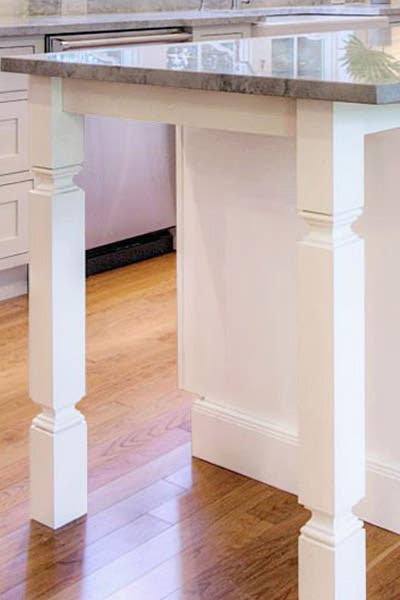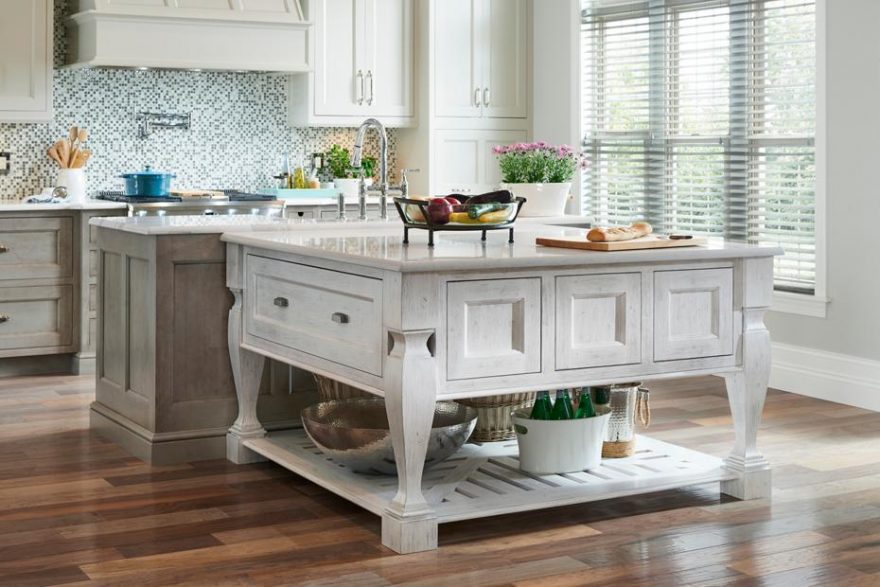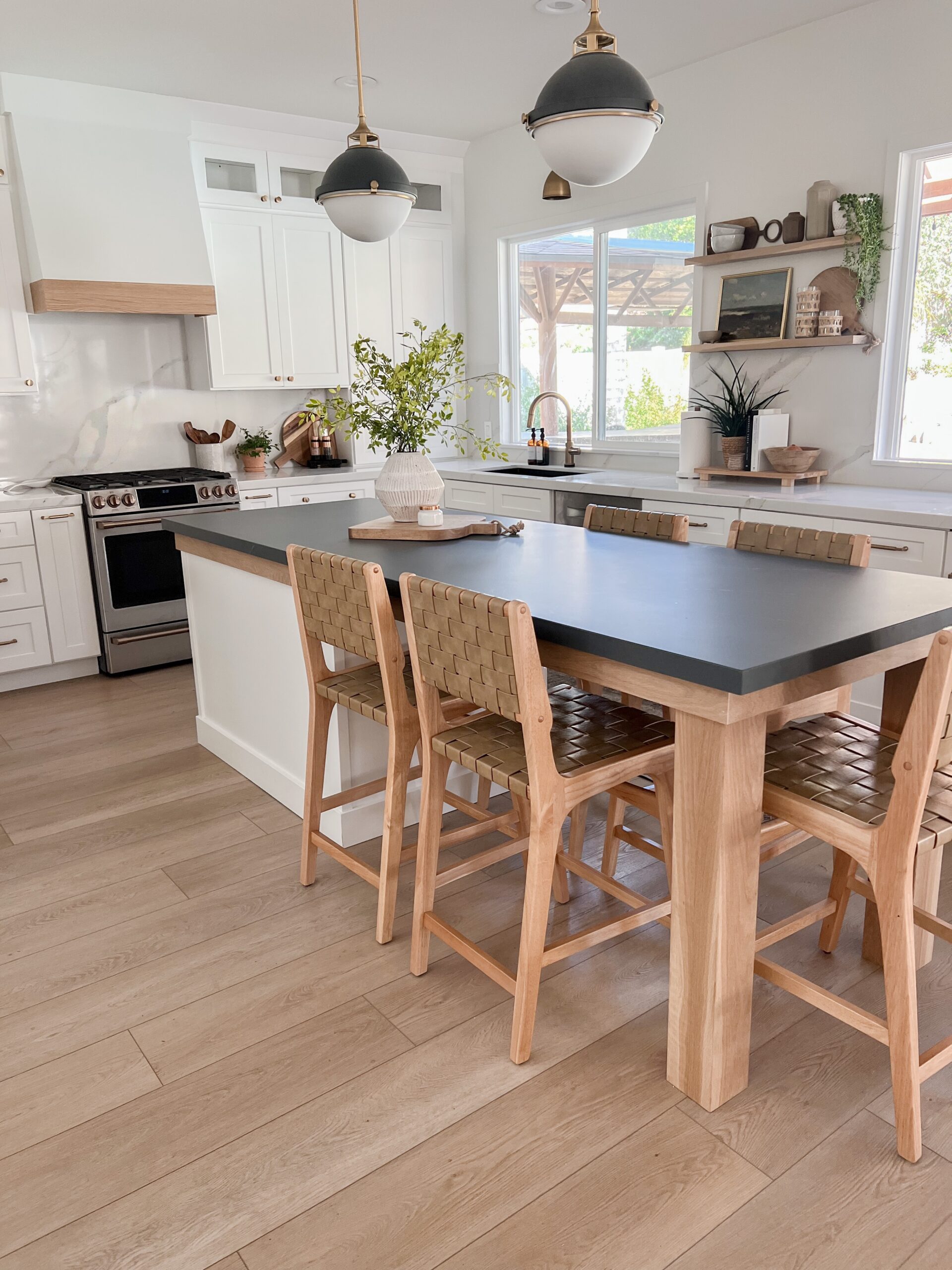Enhance Functionality and Design Making Use Of Top Quality Legs For Kitchen Island
Enhance Functionality and Design Making Use Of Top Quality Legs For Kitchen Island
Blog Article
An Overview to Selecting the Perfect Legs For Kitchen Area Island for Your Home
Picking the ideal legs for your kitchen island is a nuanced decision that impacts both the functionality and aesthetic allure of this central area. As you think about these aspects, it ends up being apparent that the right legs can change not just the appearance of your kitchen area but also its use for years to come.

Recognizing Kitchen Area Island Legs
When selecting legs for a cooking area island, it's vital to understand their practical and visual roles in the general layout. The legs work as a critical support group, making certain stability and toughness for the island, which frequently works as a workspace, dining location, or collecting spot. For that reason, the selection of material and construction method must be durable adequate to withstand everyday usage and possible wear.
Along with their structural duties, legs add dramatically to the island's aesthetic allure. They can boost the kitchen's style, whether through conventional, contemporary, or eclectic styles. The height and proportion of the legs are likewise vital factors to consider; they have to integrate with the island's kitchen counter height while guaranteeing comfortable seating for those making use of the space.
Additionally, the leg design can affect the overall flow of the kitchen. Open, airy leg styles can develop a feeling of agility, while solid, substantial legs may convey an extra based and steady aesthetic - Legs For Kitchen Island. Understanding these visual and practical elements will lead home owners in making educated options that match their kitchen's layout and improve its functionality
Popular Styles and Materials
The option of legs for a kitchen area island includes a variety of preferred styles and materials, each offering one-of-a-kind qualities that can boost both capability and aesthetics. Amongst the most popular styles are modern, rustic, and conventional. Contemporary legs frequently include smooth, minimalist styles that emphasize simpleness and clean lines, making them excellent for contemporary kitchens. Rustic designs, on the other hand, accept natural environments and commonly display recovered wood or distressed coatings, adding heat and charm to the room. Conventional legs typically display ornate information and workmanship, improving timeless kitchen styles.

Elevation and Stability Considerations

The legs of the kitchen island must provide appropriate support, making sure that the framework can stand up to day-to-day use without moving or tottering. Material choice plays a substantial role in security; steel legs, for instance, have a tendency to supply greater stamina compared to wood.
Matching Your Cooking Area Aesthetic
Selecting the right legs for your cooking area island goes beyond functionality; it additionally plays a substantial duty in the total aesthetic of the space (Legs For Kitchen Island). When picking legs, think about the design style of your cooking area.
Color is one more vital aspect. Legs that enhance or contrast with your island's surface area and surrounding kitchen cabinetry can produce visual consistency or striking prime focus. Combining dark timber legs with a light marble kitchen visite site counter can include depth and rate of interest. Furthermore, think about the coating of the legs; matte, shiny, or distinctive surfaces can significantly affect the general feeling of the kitchen area.
Setup and Maintenance Tips
Mounting kitchen island legs calls for careful focus to information to ensure both stability and visual appeal. Begin by picking an ideal location for your island, guaranteeing it is level and has enough space for motion. If you are connecting the legs to a wall or utilizing braces for included support, make use of a stud finder to situate wall studs. Mark click over here the positioning of the legs precisely prior to boring.
When protecting the legs, use top notch screws and, if essential, wood adhesive for extra toughness. For steel legs, make sure that you are using suitable anchors and tools to avoid damage to your floor covering. It is advisable to look for levelness after installment, making modifications as required to prevent wobbling.
Maintenance is equally crucial for longevity - Legs For Kitchen Island. Frequently check the legs for any type of signs of wear or helping to loosen, especially in high-traffic locations. Tidy the legs with an appropriate cleaner, staying clear of unpleasant materials that may damage the surface. For wooden legs, take into consideration using a timber conditioner regularly to preserve their finish. By adhering to these setup and upkeep ideas, you can guarantee that your kitchen area island legs remain both visually enticing and find out here now practical.
Final Thought
In conclusion, choosing the ideal legs for a kitchen area island necessitates cautious factor to consider of elevation, security, and aesthetic compatibility. Inevitably, thoughtful leg choice plays a vital duty in elevating both the functionality and layout of the kitchen room.
When choosing legs for a cooking area island, it's vital to understand their visual and useful functions in the total design. Open, ventilated leg designs can produce a feeling of lightness, while solid, significant legs might communicate a more based and steady visual. The legs of the kitchen area island need to give sufficient support, making certain that the structure can endure day-to-day usage without wobbling or moving.Setting up cooking area island legs requires careful focus to detail to make sure both stability and aesthetic charm.In verdict, selecting the appropriate legs for a kitchen area island requires careful consideration of height, stability, and aesthetic compatibility.
Report this page